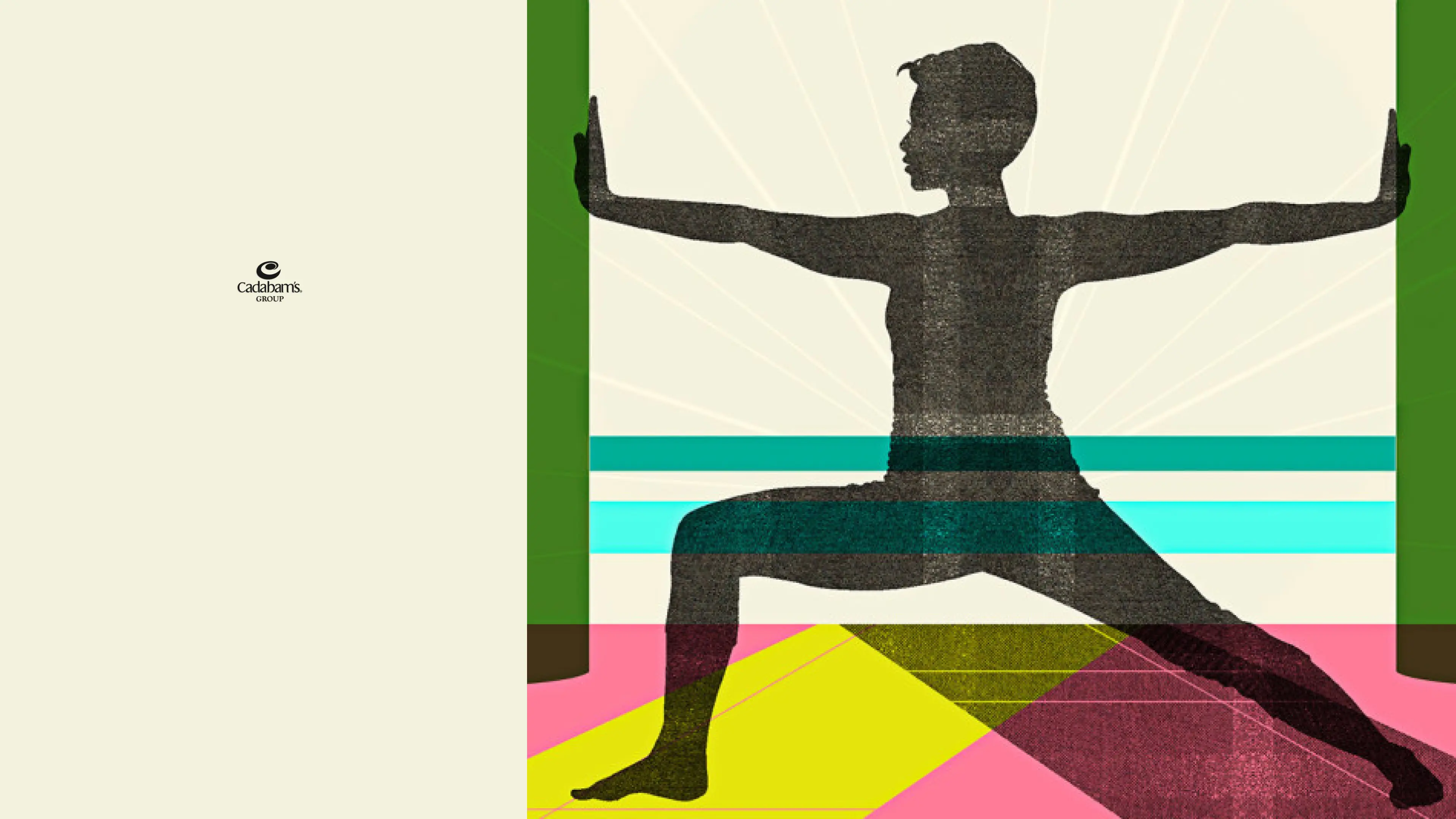Have you ever played a video game that kept you glued to the screen for hours or experienced a taste that kept you coming back? If so, then this is what pleasure feels like.
Pleasure is something that we all need in our lives, but sometimes, we chase it so hard that it becomes an addiction. While overcoming addiction requires constant effort, this blog will provide you guidance on how you can transform your life and recover from addiction using Yoga.
Understanding the Power of Yoga in Addiction Recovery
Yoga is an ancient Indian practice that has become a popular form of therapy and is being used as a complementary treatment for mental health.
According to the National Library of Medicine, Yoga is being studied as a way to treat addiction by regulating brain chemicals like dopamine, leading to improvement and recovery.
Stress Reduction and Emotional Healing
Yoga's ability to reduce stress and promote emotional healing is the crux of its effectiveness in addiction recovery. The combination of physical postures, breathing exercises, and meditation activates the parasympathetic nervous system, which in turn lowers the fight, flight, or freeze response of the body and makes the body relaxed.
This newfound awareness empowers the brain to respond to challenging situations with healthier coping mechanisms.
The Mind-Body Connection
When you are addicted, it often disrupts the delicate balance between your mind and body. Through mindful movement and breathing techniques, yoga works to restore this balance and promotes a sense of wholeness, which is essential for recovery. By integrating yoga into a complete treatment plan, you can develop the strength and self-awareness needed to face the challenges of addiction.
The Science Behind Yoga and Healing
There isn’t just one but many reasons why millions of people practice yoga worldwide, making it a global phenomenon in the last couple of decades. Yoga offers a host of health advantages that are backed by science. So, here are a few scientifically proven benefits.
Enhancing Immune Function: Boosting immunity is quite important for our body to fight and defend against harmful elements, especially during cold and flu season. By practicing yoga poses such as Sasakasan and Shavasana or breathing techniques like Nadi shodhana pranayama and Kapalabhati pranayama, one can enhance the immune system.
Stress Reduction: Stress is something that we all experience on a daily basis. Many studies have shown that incorporating yoga into a lifestyle significantly reduces stress, depression, and anxiety.
Hormonal Response: Lifestyle health issues such as depression, weight gain, fatigue, etc., can occur due to hormonal abnormalities. Yoga, with its proven ability, can be the answer, as it regulates hormones and ease the discomfort associated with hormonal imbalance.
Yoga's Role in Reducing Substance Cravings and Relapse
Dependence on drugs is one of the biggest challenges we are facing today and like other chronic illnesses, substance misuse too has a relapsing course. So, let’s understand how yoga can help in reducing substance craving and how it halts the relapse cycle.
Substance Craving-Relapse Cycle
Many yoga-related studies and research have shown that yoga can impede the dopamine surge that addicts get from substance misuse. Moreover, different breathing techniques of yoga release the body’s natural good-feeling endorphins, which suppress the addiction and keep the release of dopamine in the brain to a healthy level.
Stressful affairs are another well-known element that gives birth to addictive behavior and craving for substances. Because yoga emphasizes and promotes stress- -reduction, endurance, strength, and willpower, people who are already in recovery can learn how to control their mind and body, thus stymieing substance craving and relapse cycle.
Tips for Relapse Prevention
Recovering from addiction is difficult and comes with a significant risk of relapse. Therefore, developing relapse prevention skills is vital. So, here are a few tips to boost your relapse prevention skills.
- Self-Care: By maintaining a healthy and balanced diet and engaging in regular exercise, you can improve the quality of your sleep and reduce the risk of relapse.
- Develop a New Hobby: Find a wholesome avocation that will provide pleasure and keep you distracted from craving. For example, farming, gardening, etc. are excellent hobbies you can try.
- Mindfulness: Mindfulness is a concept that teaches self-awareness. By utilizing meditation, and breathing techniques you will be better prepared to manage cravings.
Key Yoga Poses for Addiction Recovery
While yoga isn’t a solo treatment in addressing addiction recovery, incorporating yoga during recovery can help individuals face their challenges, prevent relapse, and reduce withdrawal symptoms. Here are 5 yoga poses that aid in addiction recovery.
Child's Pose (Balasana)
Balasana or the child pose, helps to Stretch and strengthen hips, thighs, and ankles. It helps in curing back pain. It also boosts mental resilience and calmness.
You can do this pose by kneeling on the floor with your toes touching. Sit back on your heels and extend your arms forward.
Downward-Facing Dog (Adho Mukha Svanasana)
It is a grounding pose that helps to calm and center the mind, and it can also help to reduce stress and anxiety.
To do this pose, start on your hands and knees with your wrists under your shoulders and your knees under your hips. Press down into your hands and straighten your legs, lifting your knees off the floor. Keep your back straight and your neck in line with your spine.
Jnana Yoga
It is a form of meditation wherein the mind is engaged to understand itself better and goes beyond getting too wrapped in thoughts and detaching itself from the ego. It achieves its goal by using mental techniques such as self-questioning and reflection.
Unlike other yoga asanas, Jnana isn’t a physical yoga pose. It can be practiced by shedding ego and gaining knowledge through self-study and analysis.
Tree Pose (Vrikshasana)
Just like a tree with its roots in the ground and branches reaching up high, this pose teaches you to be strong and stable. The pose emphasizes and helps individuals, especially those in recovery, build a sense of stability and groundedness.
To perform Vrikshasana, stand straight and balance firmly on your left leg. Now, raise your right leg at the knee and place your right foot against your left leg. Join your hands in prayer and stretch upward.
Camel Pose (Ustrasana)
Camel Pose or Ustrasana is a backbend yoga pose that allows you to experience deep spinal, chest, abdomen, and quadriceps stretches.
To perform Camel Pose (Ustrasana), kneel with thighs perpendicular to the floor, lift the chest, and arch back, reaching hands to heels. Hold the pose, breathe deeply, and focus on opening the heart.
Yoga to Increase GABA
Gamma-aminobutyric acid or GABA, is a crucial amino acid that acts as a calming signal in the brain. It calms nerve activity, guaranteeing a balance between the brain’s excitability and glutamate for a smooth function.
A study in 2007 found that practicing yoga poses increases the level of GABA in the brain, resulting in relief from anxiety and depression.
Benefits of Yoga Combined with Recovery
In the last couple of decades the importance of yoga has increased manifold, and so does its utilization in treating addiction recovery. It is an effective tool that teaches coping strategies for managing stress and promotes healing in both mind and body through therapeutic physical activities.
If you are struggling with addiction, here are a few benefits you can gain by incorporating yoga into your everyday life.
Physical Benefits: Practicing Yoga makes you more flexible and strong, therefore, making you better equipped to manage withdrawal symptoms
Reduce Stress Level: Yoga movements and breathing techniques help in reducing stress levels, thus inhibiting cravings.
Emotional Benefits: By making yoga a way of life, you are not just bringing down stress levels but also achieving a greater peace of mind.
Self-Mastery: Addiction is basically the struggle to refuse substances. Through yoga, you can master self-discipline, enabling you to reject things you wish to avoid confidently.
Integrating Yoga into Rehabilitation Programs
Yoga is a combination of conscious movement, breath work, and reflection that complements traditional rehabilitation, offering a holistic technique for recovery.
By interweaving yoga poses personalized for individual needs, breathing exercises for stress management, and relaxation techniques for withdrawal symptoms and triggers, rehabilitation programs can address not only physical limitations but also mental and emotional well-being.
Assessment and Customization: Individualized assessments ensure yoga practices target specific needs and limitations, maximizing safety and effectiveness.
Qualified Instruction and Staff Training: Qualified yoga instructors with rehabilitation experience are crucial for safe guidance and adapting yoga postures as needed.
Program Implementation and Structure: The yoga program should complement existing therapies, progress gradually, and consider factors like duration and frequency.
Participant Education and Engagement: Educating participants about yoga's benefits and stimulating active participation is key to long-term dedication and motivation.
Monitoring Progress and Adaptation: Regularly monitoring progress and adapting the program based on individual responses ensures optimal upshots and minimizes risks.
Overcoming Challenges: Yoga as a Lifelong Companion in Recovery
Stepping toward a path of recovery from addiction is tough and can bring radical shifts to your personal growth. To realize the importance of upholding sobriety, it is crucial to welcome a few new changes to daily habits. These are:-
Maintaining Consistency in Practice
When recovering from addiction, our mind and body are still getting used to the new changes. Hence it is an ongoing journey. It needs effort, patience, and, most importantly, consistency in practicing those new ways learned during recovery to establish a sense of normalcy and to prevent relapse.
Connecting with a Supportive Yoga Community
Supportive groups are the cornerstone of any recovery. These supportive communities provide a space where you can engage in activities like yoga, share experiences, offer mutual support, build a deep sense of connection, and steer challenges together.
How does Cadabams Anunitha Rehabilitation Center Integrate Yoga into the Recovery Program?
Cadabams Anunitha Rehabilitation Center prioritizes a holistic approach to addiction recovery by integrating yoga into its extensive program. Recognizing the profound impact of yoga addiction, Cadabams Anunitha employs tailored yoga sessions to complement traditional therapeutic modalities. Our innovative approach promotes a mind-body connection and assists individuals in their battle against addiction.
Our team of psychiatrists comprises experts in psychosocial rehabilitation, cognitive behavioral therapy (CBT), interpersonal and social rhythm therapy (IPSRT), and family-focused therapy, which has proven to be highly effective in treating addiction.
At Cadabams, we offer an exclusive range of solutions and treatments based on the conditions and issues faced by an individual.
FAQs
1. What role does yoga play in addiction?
Yoga plays a crucial role in addiction recovery by promoting a holistic approach to healing. It helps individuals develop greater self-awareness, manage stress, and cultivate emotional resilience. The practice of yoga enhances the mind-body connection, fostering a sense of balance and well-being. Specific yoga techniques aid in reducing cravings, improving mood, and addressing the underlying psychological factors contributing to addiction. Overall, incorporating yoga into the recovery process provides a therapeutic avenue for individuals to build physical strength, mental clarity, and a foundation for sustained sobriety.
2. Can yoga be used for recovery?
Yes, yoga can be a beneficial tool for addiction recovery. It promotes mental, physical, and spiritual well-being, helping individuals manage stress and emotions without resorting to substance use. Yoga's mindfulness practices enhance self-awareness and emotional regulation, crucial for overcoming addiction. By fostering a sense of community and support, yoga also aids in the healing process, making it a valuable component of comprehensive recovery programs.
.webp)







